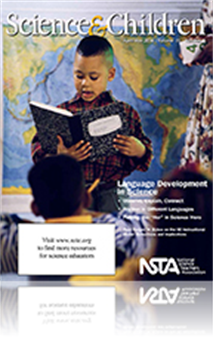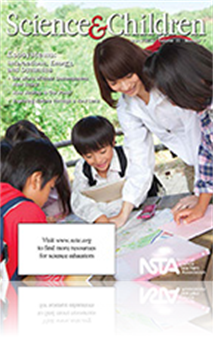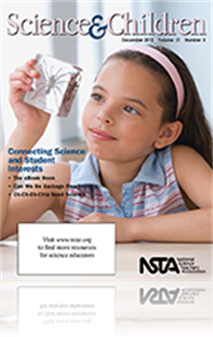All Science and Engineering Practices resources
Journal Article
Scope on Safety: Safety Requires Collaboration
This column shares safety information for your classroom. This month’s issue covers teachers receiving multidisciplinary safety training....
Journal Article
The Early Years: Creating Effective Classroom Interactions
This column discusses resources and science topics related to students in grades preK to 2. This month’s issue discusses learning about your own teaching to see if you are creating an effective learning environment....
Journal Article
The Early Years: Ecosystems, Up Close and Personal
This column discusses resources and science topics related to students in grades preK to 2. This month’s issue discusses children observing and documenting the growth of a plant from a seed to seed-production and animal interactions with the plant....
Book Chapter
A Need for Speed? Should Speed Limits Be Lowered to Reduce Traffic Fatalities?
During this unit, students will investigate physical science concepts related to forces and motion. They will then synthesize and apply their learning to grapple with the question of whether speed limits should be lowered to reduce traffic accidents....
Journal Article
The Early Years: Becoming Attuned to Sound
This column discusses resources and science topics related to students in grades preK to 2. This month’s issue provides sound explorations....
Journal Article
Recognizing Excellence: Pinging: Sound at Work
A "Teacher at Sea" learns how scientists use sound....
Journal Article
The Early Years: Now We're Cooking
This column discusses resources and science topics related to students in grades preK to 2. This month’s issue explores matter through cooking....
Journal Article
Engineering Encounters: Engineer It, Learn It: Science and Engineering Practices in Action
Step into an elementary classroom to see what Next Generation Science Standards practices look like....









